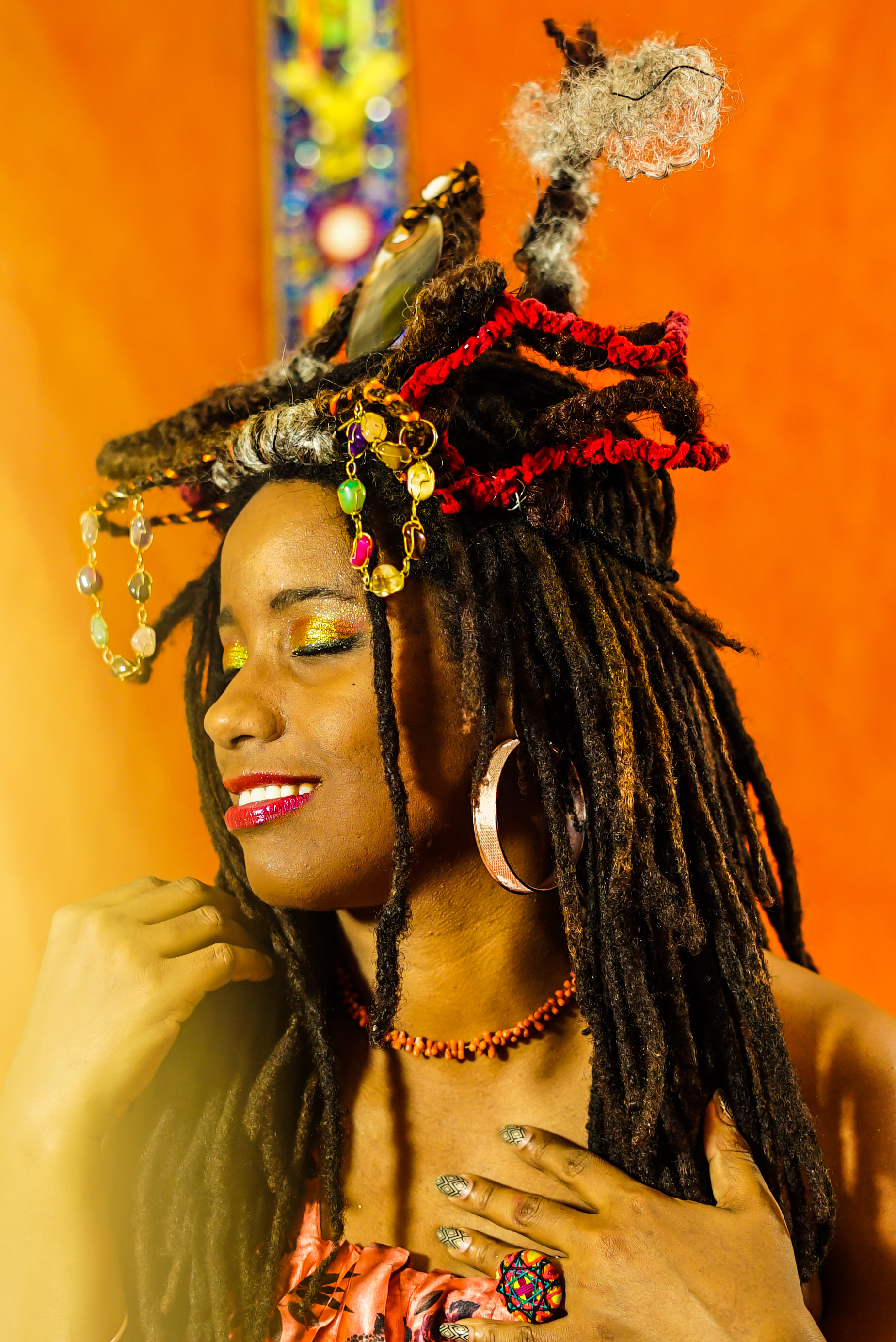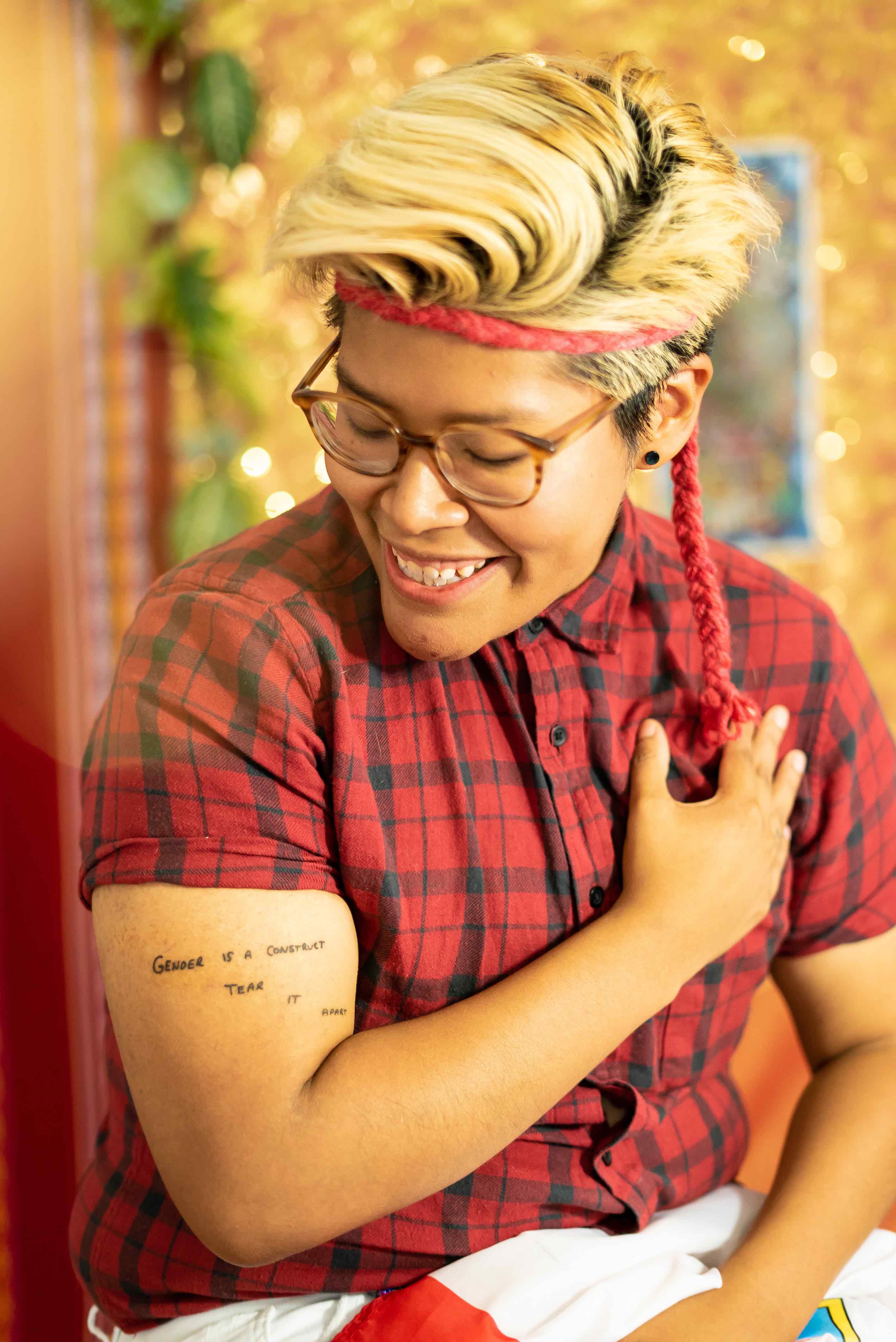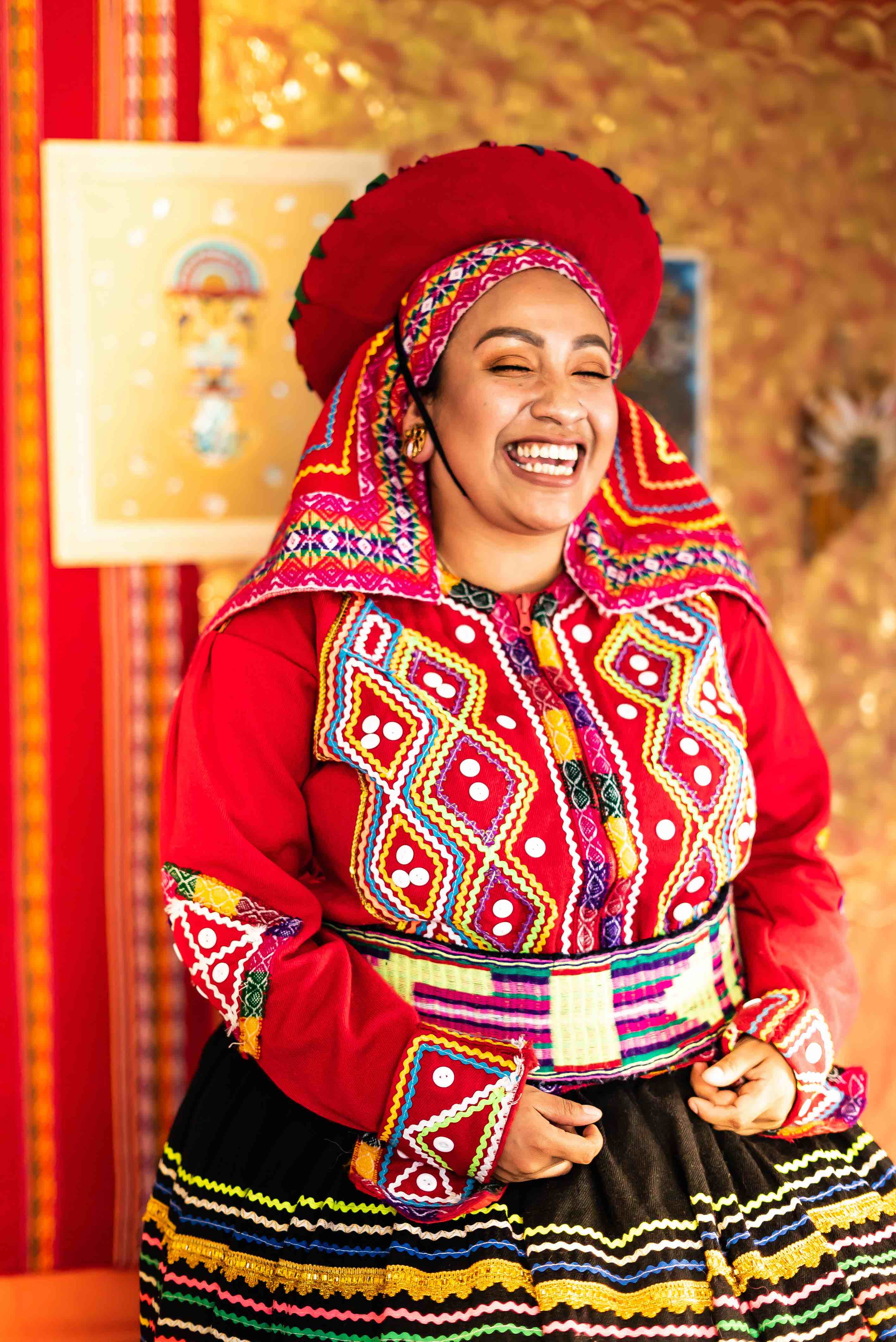On a chilly fall day in New York, photographer and filmmaker Connie Chavez transformed Brooklyn’s Mayday Space into a gallery and site for Peruvian visibility and healing. Festejos – the Afro-Peruanx rhythms of the country’s coast – played, glasses of Pisco were served, and vendors sold traditional textiles, embroideries, and spirits as 120 Peruvians, Latinx activists, and cultural workers observed portraits of the diaspora and listened to critical dialogue on representation, displacement, and mental health at Chavez’s first tour stop for her one-of-a-kind traveling exhibition and photo series, Alegría Peruanx.
The photo project spotlights the diversity of the Peruvian diaspora in the US and shares narratives on loss, unbelonging, and trauma that young immigrants and children of immigrants experience throughout the country after leaving their homelands, many by force due to civil conflict and state violence.

“Alegría Peruanx is a gallery meant to create representation and also healing for the diaspora of Peru in order to be able to reclaim our power as a people who have been hurt by our own people, our government,” Chavez, 27, tells me.
At about 651,000, Peruvians make up the eleventh-largest Latinx population in the United States, above Venezuelans and Argentines, yet often with much less representation in both Spanish-language and English-language news and popular media. With minimal visibility, Chavez says her community can feel excluded from dominant US society as well as from fellow Latinxs and begin to experience shame for their cultural practices.
Hoping to gift her community with long-sought representation, validation, and pride, Chavez started working on Alegría Peruanx in June of 2018. The series currently includes 14 portraits of Peruvians from the Northeast between the ages of 23 and 35. The backdrops, which incorporate traditional Peruvian reds, whites and golds, textiles and art, allude to the shared culture that unites all of the project’s participants, while portraits of smiling and laughing queer, straight, trans, cis, women, men, nobinary, Black, Indigenous and white Peruvians show the diversity of its people and the joy in being seen and recognized as their full and varied selves.

But while producing a project on identity and orgullo, the peruana had an unexpected confrontation with mental health. Upon embarking on what Chavez has called an “internal revolution,” the Long Island-based artist, who migrated from Peru to Queens when she was 4 years old, asked her parents about their immigration story. Assuming her mother and father left home for economic pursuits in the “land of opportunity,” Chavez was stunned to learn that they were actually fleeing state intimidation. Learning about the violence they witnessed during the government’s war with the Sendero Luminoso, a communist revolutionary organization in the South American country, allowed her to make sense of the behaviors they exhibit today, decades after making a new life for themselves in the United States.
“It became exponentially clear as to why we left and why my parents are the way they are, in terms of my dad’s anxiety and my mom’s signs of PTSD,” she says. “There’s a reason why I can’t just walk up to my mother and say hi to her. There’s a reason why she is startled so easily.”
As Chavez spoke with participants about their immigration stories and experiences as first- and second-generation Peruvians in the US, she quickly discovered that her parents’ tale, and the generational trauma it’s dealt her family, wasn’t unique. Ten of the 14 subjects she photographed experienced living with mental health illnesses, largely as the result of their forced displacement as well as the homophobia and racism they experienced from their own community while living here.
With this insight, Chavez was motivated to modify the focus of her first gallery event to expand beyond visibility and pride and include a much-needed discussion on trauma, re-education, accountability, and solidarity. While creating a space of bliss and belonging, her November 30 exhibition also addressed the need for Peruvians, and all Latin American communities, to dismiss the impulse to romanticize their homeland without critique and challenge bigoted ways of thinking, particularly about Black, Indigenous and queer Peruvians, that many carry with them to the States.

“That orgullo and pride and nationalism, it’s a beautiful thing, I get it, but you can’t just love your country blindly,” Chavez adds. “That’s not how love works. We’ve all experienced love, and we all know how loving blindly works. It leads to disaster and toxicity.”
Instead, she encouraged the audience to scold with love. Just as she used a welcoming space where her community could laugh, dance, reminisce and feel seen to bring up contentious, but necessary, dialogue on mental illness, anti-blackness and homophobia, she believes others can gently hold themselves and their compatriots accountable for the ways in which they inflict harm.
“Look at how I’m treating my people. I’m holding [everyone] accountable here,” she continues. “People come in, see how much I absolutely love my country, but I won’t let shit fly. I love them too much to do that.”
Chavez, who hopes to ultimately take Alegría Peruanx to Peru for a three-day, interactive festival that bridges the gap between people in Peru and the diaspora, is following her 2018 New York gallery with a 2019 speaking and visual tour, visiting cities with sizable Peruvian populations, like Paterson, New Jersey; Doral, Florida; Burbank, California, Chicago and more.
“I just really want my people to feel loved, supported and validated,” she says, “because this journey, especially when you’re also dealing with mental health, is really, really hard.”







